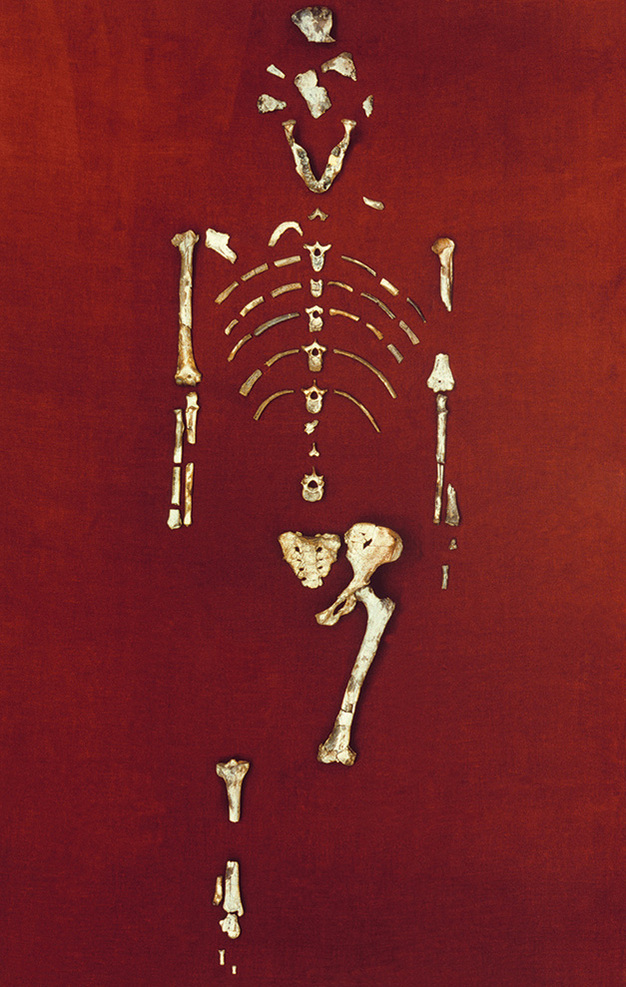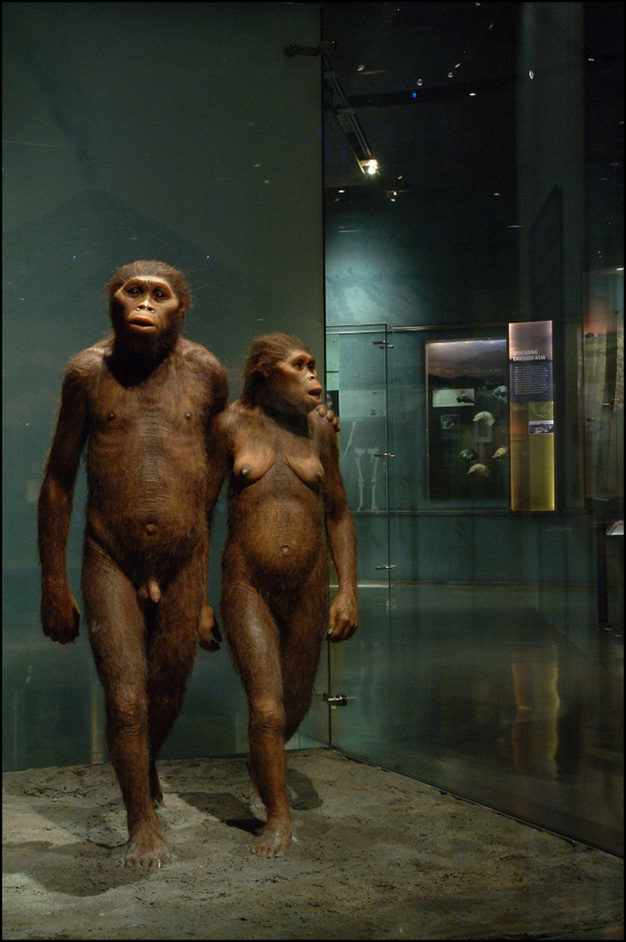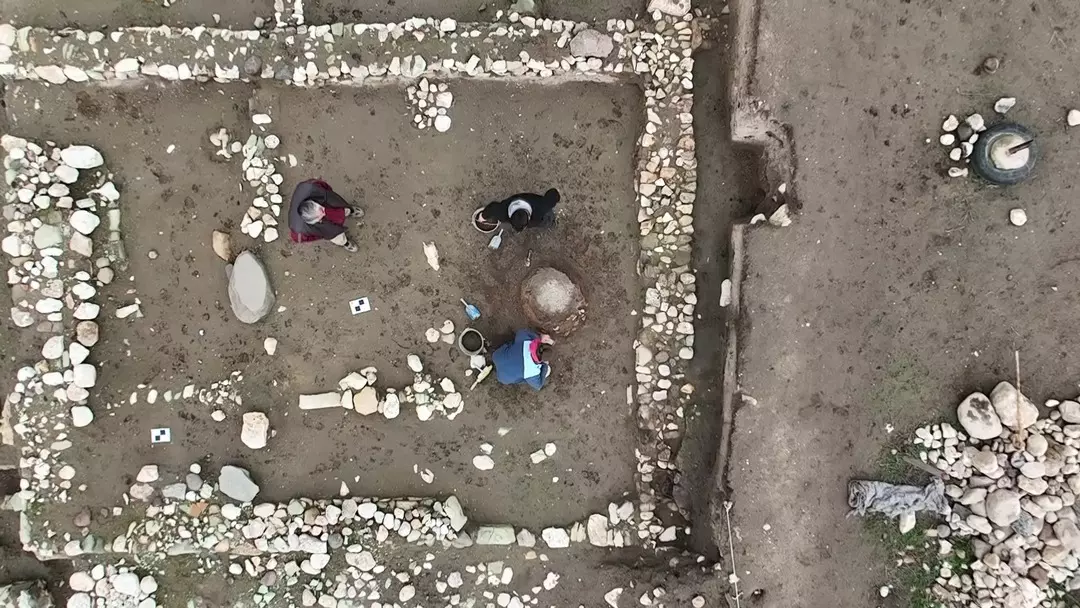By Caitlin M. Schrein | Science Writer, National Science Foundation
© 2015 Nature Education
Note: The views expressed here are those of the author and do not necessarily reflect those of the National Science Foundation.
Who Was Lucy?
“Lucy” is the nickname of one of the most famous early human ancestor fossils ever discovered. But what makes her so special, and what have scientists learned from her?
A Landmark Discovery in Ethiopia
On November 24, 1974, while songs like “Annie’s Song” by John Denver and “Bennie and the Jets” by Elton John topped U.S. music charts, a team of international scientists was deep in the field in Hadar, Ethiopia. Instead of pop hits, their camp echoed with “Lucy in the Sky with Diamonds” by The Beatles — a song that would unwittingly inspire the nickname for a remarkable discovery.
That day, paleoanthropologist Dr. Donald Johanson and graduate student Tom Gray were surveying 3.2-million-year-old sediments when they stumbled upon the first fragment of a fossil that would soon captivate the world — the partial skeleton of an early human ancestor. Had the music been different, perhaps she would’ve been called “Annie” or “Bennie,” but fate chose “Lucy.”
The Start of Something Extraordinary
Johanson, then a 31-year-old anthropology professor, had previously visited Ethiopia in 1972 and 1973, discovering a fossilized hominin knee joint during one of those trips. Optimistic about the potential of the region, the 1974 expedition soon paid off when Ethiopian team member Alemayehu Asfaw found hominin jaw fragments near the Hadar camp. Spirits were high.
The first bone Johanson spotted from Lucy was part of her ulna — the elbow bone — which stood out from the sediment. He recognized it immediately as belonging to a primate and possibly a hominin. As he and Gray carefully scoured the ground, more pieces began to surface: parts of the skull, jaw, ribs, pelvis, limbs, and feet — nearly 40% of a full skeleton. It was a stunning find.
The fossil site where Lucy was unearthed is now designated as Afar Locality 288, or A.L. 288. The team meticulously recorded and collected every fragment, laying the groundwork for decades of study.
One Individual or Many?
One of the first questions scientists asked was whether the bones all belonged to a single individual. The answer lay in the numbers and the condition of the fossils. There were no duplicate bones — no extra femurs or jaws — which strongly indicated that the remains came from just one individual. Moreover, the fossils shared the same coloration and weathering patterns, suggesting they came from the same environment and time period.
How Do We Know Lucy Was Female?
Johanson suspected right away that Lucy was female, mainly due to the small size of the bones. Like many primates, early human ancestors were sexually dimorphic — males were typically larger than females. Over time, further analysis confirmed this, placing Lucy’s height at around 104 to 106 cm (roughly 3 feet 5 inches). Males of her species likely stood closer to 150 cm (just under 5 feet).
In 2008, advanced 3D modeling helped virtually reconstruct Lucy’s damaged femur, showing it was only slightly shorter than earlier estimates suggested.
Was Lucy a Child?
Despite her petite frame, Lucy was not a child. Her wisdom teeth had fully erupted and showed signs of wear — a reliable sign of adulthood. Based on comparisons with modern humans and chimpanzees, scientists estimate that Lucy was between 12 and 18 years old when she died. Additional clues, such as her hip and limb bones, also support that she was a fully mature adult.
What Species Did Lucy Belong To?
At first, Lucy’s species was unknown. However, her knee and leg bones showed she walked upright, a key trait of hominins. Her teeth and pelvis also aligned with early human ancestors. In the years following her discovery, hundreds more hominin fossils were found at Hadar and another site in Tanzania called Laetoli.
After careful analysis, Dr. Johanson and Dr. Tim White proposed that these fossils belonged to the same previously unknown species. In 1978, they introduced it to the world: Australopithecus afarensis.
What Did Lucy Look Like?
While we can't know every detail, scientists have estimated Lucy’s height and weight using her bones. Paleo-artists often work with researchers to create life-like reconstructions. They use casts of fossils to model muscle and skin with clay, then add hair and other details (see Figure 2).
Lucy likely had more body hair than modern humans but less than chimpanzees. She may have had dark skin, as high melanin levels would have protected her from intense equatorial sunlight — much like modern populations living in similar regions today.
Why Is Lucy So Famous?
Lucy is iconic for many reasons. For Ethiopians, she’s a national symbol. Her Amharic name, Dinkinesh, means “you are marvelous,” and in the Afar language she’s known as Heelomali — “she is special.” At the time of her discovery, she was the most complete, oldest known hominin skeleton ever found.
Importantly, Lucy demonstrated that walking on two legs (bipedalism) evolved well before large brains — a key piece of the evolutionary puzzle. Her species lived for over a million years, bridging a gap between primitive ape-like ancestors and more modern human-like beings.
Is Lucy the “Missing Link”?
The term “missing link” has fallen out of favor among scientists. Dr. Johanson explains:
“The idea of a single ‘missing link’ oversimplifies human evolution. Evolution is a long, branching process with many transitional forms. Australopithecus afarensis, Lucy’s species, is one of those crucial intermediaries — not the bridge itself, but a vital step along the way.”
As research continues and new fossils are discovered across the globe — from Africa to Asia to the Americas — the human family tree grows ever more complex. And who knows? Maybe someday, someone will discover a fossil just as marvelous as Lucy.









